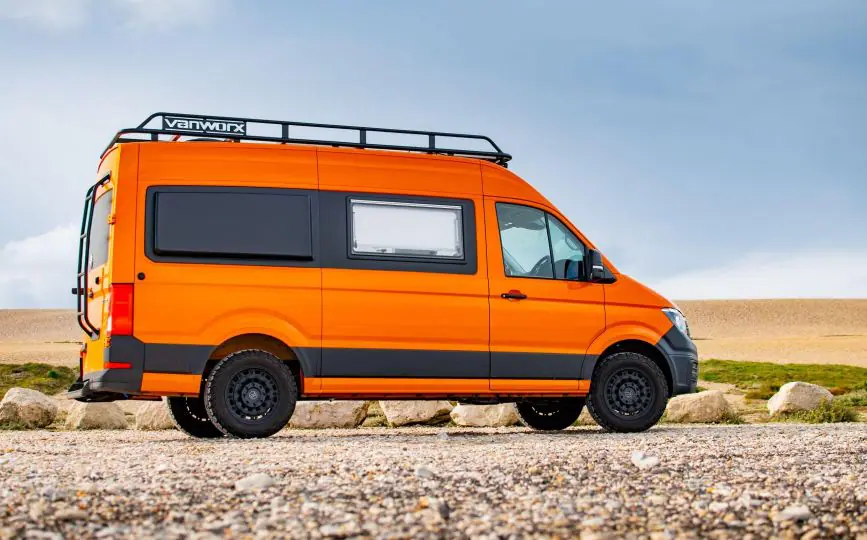
Choosing a van is like choosing
a Companion of Adventure: it has to be the right one!
Which van do I want to convert?
This is the first question that will come to your mind if you are thinking of embarking on a Do-It-Yourself conversion.
Then again, choosing a van is a very important step. The van is indeed the blank canvas on which your going to build your masterpieceand no artwork can come out right if the foundation is missing.
In this article, you’ll find a comprehensive step-by-step guide that will help you figure out which vans are best suited for conversion (pros and cons), what your needs are, and where to look for the best model for you.
The article is divided into three parts:.
- Types of Van for Conversion all types of vans suitable for DIY on the market (Pro and Cons)
- Think Before You Search: all the questions you need to ask yourself to know what to look for, and where to look for it
- Where to Search Online: the best sites to look for a used van, both in Italy and in Germany
Below you will find a full summary.
TABLE OF CONTENTS
Know the Vans on the Market
1. Types of Vans Suitable for DIY Conversion
think before you search
2. All the Things You Need to Consider
3. Used Vans: What you should look for
online search
4. Where to look for used vans online (Italy and Germany)
5. Useful Tips for Making a Good Purchase
KNOW THE VANS ON THE MARKET
1. Types of Vans Suitable for DIY Conversion
The first step to converting a van is, as you can well imagine, having a van!
In this section, we take a look together at which types of van are best suited to be converted into small houses on wheels and analyze their advantages and disadvantages.
1.1 European Vans
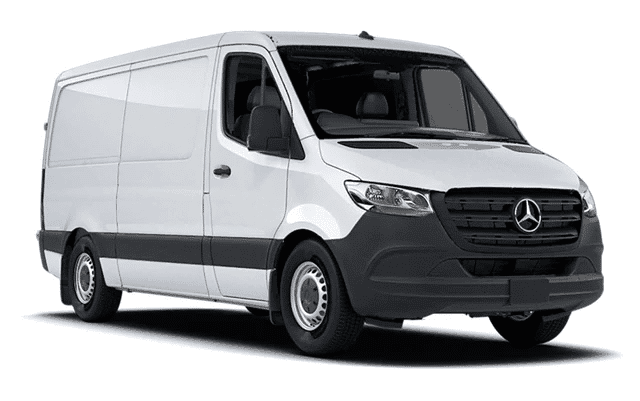
European vans, led by the iconic and celebrated Mercedes Sprinter, are the most popular vans for those are looking to jump fulltime into the Vanlifelifestyle.
High roofs, a variety of sizes and lot of space make this kind of vans ideal for every need, (also for large projects as for example a complete wet-shower). Obviously the extra space comes at a price, both literally (higher upfront and maintenance costs) and in terms of driving ease and parking freedom (driving and parking a 7-meter vehicle is not for everyone).
Models
Mercedes Sprinter, VW Crafter, Iveco Daily, Fiat Ducato, Renault Master
Pros
- Most spacious vans under 3.5T
- They can reach 500,000 km
- Easy to Find Used in Europe
Cons
- High price (also 2nd-hand)
- Expensive Maintenance
- Used cars often have many miles
1.2 American Cargo Vans
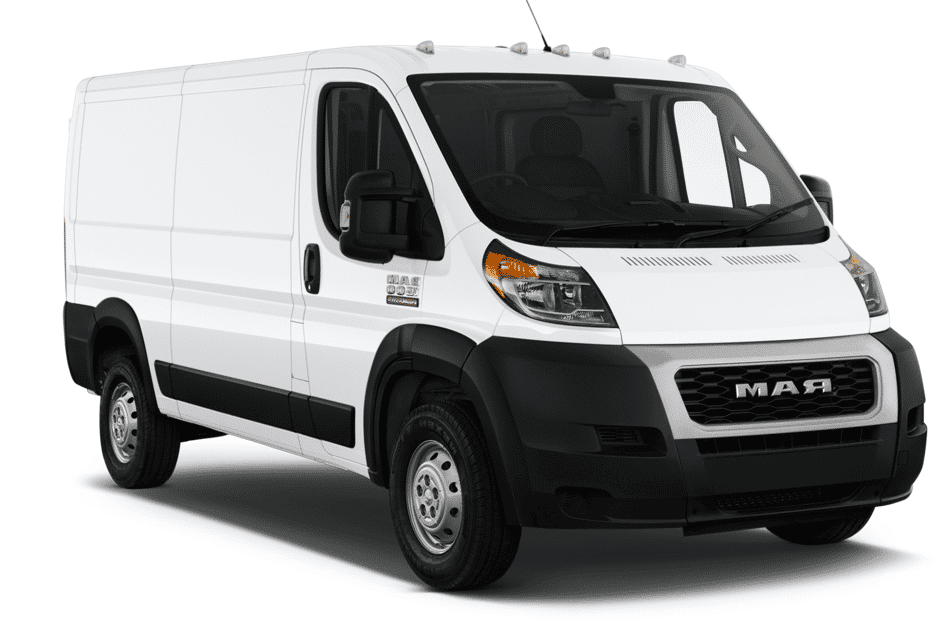
American cargo vans are a good compromise between cost and space and for this reason very suitable for those who are not yet sure of moving on a full-time Van adventure.
Less spacious than European-style vans, but also much less expensive both to buy and to repair, they are very popular with the American Vanlife community. In Europe there are very few of them, making many of them an almost impossible option to find for those living on the East Coast of the Atlantic.
Models
RAM Promaster, Ford Transit, Chevy Express, GMC Savana…
Pros
- Available in various sizes
- Lower cost compared to EU Vans
- Easy to Repair
Cons
- Hard to find in Europe
- Less durable than EU Vans
- Less spacious than European vans
1.3 Passenger Vans
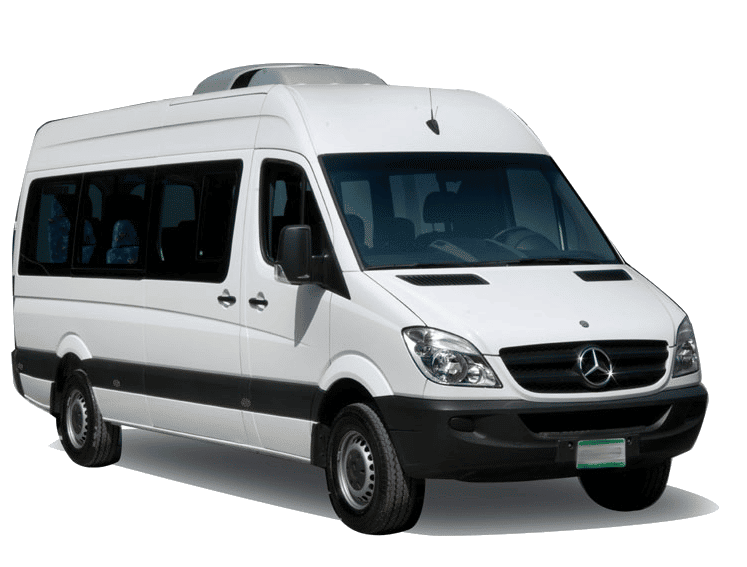
Many of the vans seen so far (both EU and US) are also produced by the manufacturers in their passenger version (minibus).
Not having to cut windows is definitely an added benefit (less cost and time) and having lots of windows means having a brighter environment. The other side of the coin is that blacking out and insulating windows you don’t need can be tricky, you have fewer “hooks” to attach your furniture to, and having too many windows can affect your privacy.
Models
Almost all the previously seen European and American Cargo Vans models, in passenger version
Pros
- Lot of Natural Light
- As spacious as Cargo
- You can sell extra seats
Cons
- Difficult to insulate thermally
- Less Space for Customization
- Less Privacy
1.4 Classic Vans
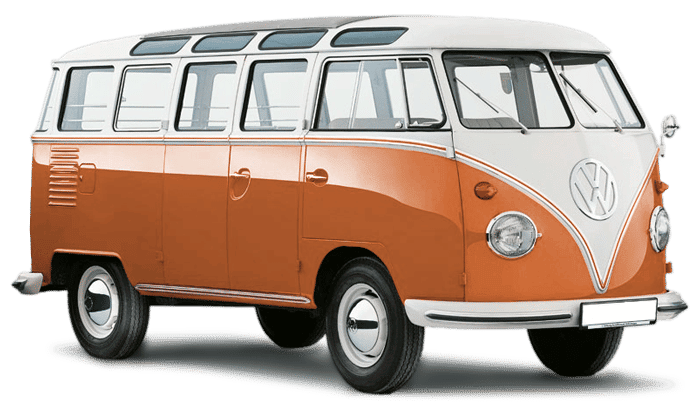
When it comes to classic vans, Volkswagen vans can only come to mind. These are vans that have survived history and still enjoy a large community of enthusiasts today.
Stylish and iconic, they break easily but at the same time can be repaired with little money. The cargo space is small and insulating them thermally almost impossible. They’re perfect for fashionable summer roadtrips, less so in terms of price, comfort and safety.
Models
VW Minibus, VW Vanagon,
VW Kombi, VW Transporter (T1-T6)
Pros
- Iconic and romantic design
- Easily Repaired
- Community of Enthusiasts
Cons
- High Purchase Cost
- Breaks often
- Reduced Space and Cold in Winter
1.5 medium-sized vans and suvs

Converting a small-to-medium sized SUV/van has its advantages: a lot of flexibility on where to park, easy to drive, and the costs of both purchase and conversion are much lower.
Obviously, a smaller vehicle offers smaller spaces, which means fewer customization options and less comfort. This type of vehicle is ideal forweekend getaways and shorter roadtrips.
Models
Ford Transit Connect,Renault Kangoo, VW Caddy Maxi,Vauxall Combo Cargo (L2), Peugeut Partner (L2), Citroen Berlingo (L2)
Pros
- They can park anywhere
- Easy to Drive
- Reduced Costs
Cons
- Less space to Convert
- Standing is not Possible
- Small for Full-timers
1.6 Box Vans
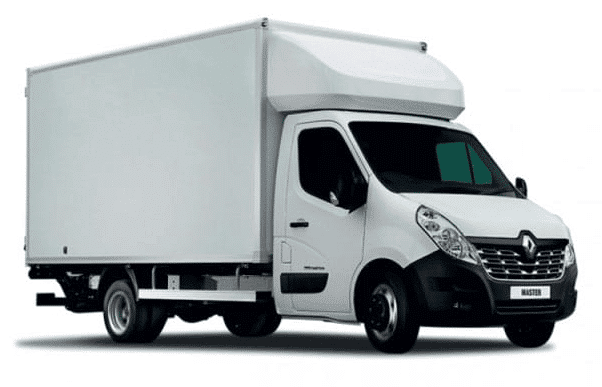
Box vans are vehicles that offer far more space than you could ever imagine filling, perfect for those who aren’t satisfied with a tiny apartment on wheels but want a real home.
Obviously, large size means also obvious disadvantages: harder to park, more complex to drive, more expensive insurance, and access limitations (especially on unpaved roads). As commercially they are extremely used, second-hand box vans are widely available and prices are relatively affordable with an excellent space/cost ratio.
Models
Most European Vanspreviously listed, equipped with boxes.
Pros
- Wide range of design possibilities
- Cheap 2-nd Hand
- Oversized Space for Everything
Cons
- Cumbersome to drive
- May require Truck driving licence
- Not for All Roads
1.7 Skoolies and Buses

School buses and buses for more than 10 people are vehicles for the most daring and crazy conversions.The community around this kind of vehicles is not as numerous as for normal sized vans, but certainly it is extremely active and united.
As spacious as they are bulky and as romantic as they are expensive, Skoolies and Minibuses are special vehicles for special projects. In America, the large spaces and the accomodating legislation allow converted Skoolies to circulate quite freely. In Europe instead, managing such a large vehicle is slightly more difficult (both to drive on smaller European roads, and to homologate).
Models
School bus
Courier
Urban buses
Pros
- Oversized Space for Everything!
- A Real House on Wheels
- Iconic and Rare
Cons
- Very Expensive Campering
- Difficult to homologate in Europe
- Very cumbersome to drive
1.8 Traditional Motorhomes
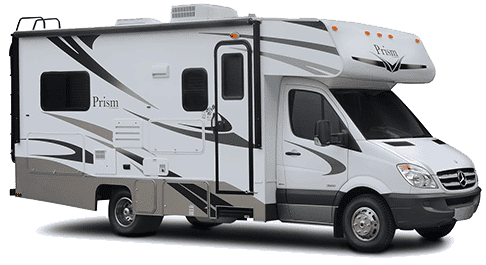
Traditional RVs are not an option for do-it-yourself enthusiasts, but a ready-made camper may appeal to those who are short on time and want to hit the road immediately.
Buying a ready-made recreational vehicle is easy, quick and definitely gives a lot less headache than making it yourself. The downside though, is that it costs a lot more, it doesn’t offer the same customization possibilities and doesn’t give the same satisfaction of creating your own camper with your own sweat.
If you’re on this page, you’re probably not interested in a traditional RV, which is why we won’t be delving into these types of vehicles.
Models
Semi-Integral Motorhomes
Pure campers
Coachbuilt Camper
Pros
- Ready to travel!
- Spacious and Comfortable
- Already Homologated
Cons
- Costs are prohibitive for many
- Bulky and not very Discreet
- Not Suitable for DIY
THINK BEFORE YOU SEARCH
2. All Things to Consider
Before you start looking for a van, it is essential to understand what you are looking for.
In this section you’ll find all the questions you need to ask yourself before launching into research, including:
2.1 Intended Use of the Van
The first thing you need to understand to start your project, is to understand your needs.
For Long Trips or Just Weekends?
If you’re only planning on using your Van-Camper for short trips or weekend adventures, probably any vehicle that can hold a bed, bike and some furniture is all you need.
If you plan to live in your van for longer periods instead, you’ll probably need more space and more amenities (kitchen, bathroom, electricity) which will necessarily steer your choice towards a larger (and more expensive) van.
Will you drive only in Europe or also in other Continents?
If your idea is just to explore Europe, you’ll spend most of your time on paved and well-maintained roads. In this case, any traction and engine power will do the trick.
If, on the other hand, you plan to travel to other continents (such as Asia, South America or Africa), you’ll have a greater chance of ending up on rough roads. In this case, it’s worth thinking about the possibility of a 4×4 and favoring more powerful engines. After all, there are places where you can’t afford to be stuck!
2.2 Budget
The second question that naturally pops into mind is:
How much does it cost me to convert a van?
The truth is, it really depends on your needs, preferences and availability. There are people who spend over 50.000 Euros on Full-Optional conversions and others who can create livable vans for less than 3.000 Euros.
The real question you should be asking yourself in my opinion is:
How much I am willing and I am feeling comfortable to spend on a Van Conversion?
First of all, my advice is to think about what amount of money you are willing to invest. This will affect all choices from here on out.
Think in terms of total cost: the cost of buying a van and the cost of refitting it and turning it into an RV.
A popular formula among Do-It-Yourself Vanlife enthusiasts goes as follows:
TOTAL COST = ⅓ CONVERSION COST + ⅔ VEHICLE COST
The logic behind this formula is that:
- unless you find a super deal (and this happens very rarely), you normally get what you pay for.
- If you buy an old van for a few thousand Euros and 250,000km behind it, it would be a waste to invest 20,000 Euros in converting it, because the day it will break down irreparably all the interior will have to be thrown away too.
- Conversely, spending 30,000+ Euros on a new super-van and then going super-minimal on conversion would make one smile just as much. You’d end up with a good vehicle but without the amenities you need to live comfortably in it.
Obviously, the 1/3 + 2/3 ratio is flexible, but it remains a good tool to estimate the total cost of the camper van without having to go into all the details right away.
2.3 Length
The length of the van affects the space you’ll have available for your conversion, but also how comfortable or inconvenient it will be to manoeuvre and park.
Do I need a lot of space or am I willing to compromise?
If you’re thinking about a van for long trips and full-time living, you’ll almost certainly be thinking about adding a kitchen, fridge, table and maybe a bathroom with a shower. All of this takes up a lot of space and is quite difficult to fit in an average sized van. In this case, your choice will be geared towards Vans with an overall length of 6-7 meters.
Conversely, if you’re thinking of shorter trips and are willing to live in your van by making some compromises and giving up some extra comforts, a shorter van (around 5 metres) might be for you.
Do I have bulky items to carry or just the essentials?
If you plan to load equipment for your hobbies (bikes, surfing, barbeques etc.) or otherwise think you need a lot of cargo space, your choice will be geared towards longer vans.
How many people will my camper van accommodate?
Will you be traveling alone or in pairs? If you will be traveling alone, are you interested in having space to accommodate someone else possibly in the future? Or do you want to use the van for family trips with your kids?
Thinking about how many people your van will need to accommodate is important in understanding your space requirements and consequently which van to look for.
What are the advantages and disadvantages of having a Long Van?
The number one advantage, as you’ve probably figured out by now, is:
- Have plenty of space to build your little house on wheels.
When you live in a confined space, every inch counts.
An extra metre is a huge (!!) amount of space and can be the difference between having the comfort of a bath-shower or not, having a spacious wardrobe or not, having space for bikes or not, etc.
Of course, a long van also comes with its own set of advantages:
- You cannot park in a normal car park (car parks are only 5 metres long)
- The larger the vehicle, the more difficult it will be to drive and maneuver
- Driving in the City is complicated, parking is a challenge
- Petrol consumption is higher
- The cost of insurance is higher
None of the disadvantages are insurmountable, but it’s good to keep them all in mind when making your choice. Think about what’s most important to you: space or maneuverability, comfort or lower costs.
How do you measure the length of a van?
Vans are produced by manufacturers to meet various market needs. Therefore, the same model of van (e.g. Mercedes Sprinter) is produced in different sizes in terms of both height and length.
Van manufacturers commonly use standard acronyms to describe the length of their vans and these are: L1, L2, L3, (and in some cases) L4.
L1 (length 1) is the shortest version of a given model, while L3 (or L4) is the longest.
It is important to note that each manufacturer associates different numbers with each of those acronyms, so for example a Mercedes Sprinter L2 will have a different length from a Ford Transit L2 or a Daily Iveco L2.
To be sure of the length of the vehicle you’re going to buy, it’s important to check the exact model and, if necessary, measure it in person to be 100% sure.
If you’re looking for van dimensions (height, width, length, wheelbase etc.) be sure to check my article Best Vans for DIY Conversion where i gathered in one page all pro, cons and sizesof all the most popular vans. As I already spent so much of my precious time researching them while looking for my van, I thought of at least helping you to save yours!
2.4 Height
The height of your van, like the length, directly impacts the available space inside your future campervan.
How do you measure van heights?
The heights of the vans, similarly to the length, are measured with three abbreviations (H1, H2 and H3). As in the previous case, the abbreviations refer to different sizes for different manufacturers.
The lowest H1 load height is (depending on make and model) between 130-155cm. The low height of the H1 vans make them quite uncomfortable and not suitable for long trips (unless you can adapt particularly well).
H2 load height, the median, is the most common height on the market and is between 188-203cm. This range makes it ideal for creating environments where you can stand comfortably.
The H3 load height, the highest, is between 207-225cm. This height offers the maximum possible space within the cargo area, however vans of this size on the used market are much less common than the H2 and of course, more expensive.
The questions you need to keep in mind as you reflect on the right height for you are:
Is it important for me to be able to stand up in my van?
Being able to stretch and stand without having to bow your head is without a doubt a great benefit, and for many vanlifers who travel and live in their RV, it’s also an essential necessity.
When you need to decide on the height of your van, keep in mind that at least 5-6 centimeters will be lost in the thermal insulation of the floor and ceiling (if you plan to insulate your van) and therefore you’ll end up with less space than you originally had.
How much cargo space do I need?
Taller means roomier. If you need a lot of space, obviously getting a high ceiling van has benefits. At the same time, however, you have to consider that a tall vehicle may find itself limited in front of low garages or city bridges (that’s the case in Italy, where I come from).
2.5 Mileage
If you’re thinking of converting a used van, mileage is one of the most important factors in guiding your purchase decision.
How many miles can a van reach? (Sprinter, Crafter, Daily, Ducato, Transit etc.)
Generally speaking, with regular and careful maintenance, all popular vans can likely aspire to achieve between 300,000-500,000km.
A well-maintained van can go well over 500,000km and there are even stories of people claiming to have made it to a million! But it should be noted that these are special cases, rather than the norm, and they certainly needed a lot of maintenance and repairs.
What is the maximum mileage I should consider buying?
My opinion, is that all vans under 200,000km can be considered.
In addition to mileage, you should also consider how regularly the vehicle has been maintained by the previous owner and how it has been used.
In fact, it is easy to see how a van used by a construction company, for example, can be much more worn and poorly maintained than that of a private individual who used it to transport light items for his shop (e.g. a florist!).
A general rule of thumb to keep in mind is that the maintenance cost of a vehicle goes up once it reaches the 200-250k miles threshold (which is also why many companies resell them once they reach this threshold).
What are the benefits of lower mileage?
Fewer repairs, lower maintenance costs, fewer headaches. When you travel in your camper van, the reliability of your vehicle must be your number one priority.
In fact, when you live on wheels, that van becomes your home: if it stops, you’re left without a vehicle and without a roof over your head!
For this reason it is important to evaluate well the use you want to make of the vehicle and decide how many resources to invest in it. Unlike the interior equipment, the vehicle cannot be changed over time!
Do you want an RV that will be with you for many years to come? Try to stay around 100k km or make sure it’s always been maintained carefully and on time.
In the end it’s all about balancing your budget with your future needs.
2.6 Age of the Vehicle
How important is the age of a used vehicle?
The age of the vehicle isn’t as important as its condition, otherwise there wouldn’t be so many 1980s VW Buses and Westphalia still on the road.
A vehicle may be old, but if it has been kept well and treated with love, it can be much better than a vehicle that is only two or three years old but treated poorly.
When choosing a vehicle, age is important to get an idea of the factory specs (with Google you can find all the info on dimensions, specs etc) but not too relevant to determining the quality of the vehicle.
Also, when you’re looking for a used van, it’s also important to consider the cost of repairs.
Maintaining or changing parts on a recent Mercedes Sprinter can cost a lot more than repairing a Ford Transit, while very old and less electronic models (e.g. VW Bus) can be repaired for a fraction of the price by any mechanic or even by yourself with a little tinkering.
2.7 Environmental certification
Do I need an environmental certification or can I move around with the engine I want?
A more important factor than the age of the vehicle, especially in Europe, is environmental certification.
In fact, European standards are becoming very stringent on vehicle emissions and driving restrictions are very strict.
In many countries of Europe (and in Italy too), the circulation of vehicles Euro 0, Euro 1, Euro 2 and Euro 3 vehicles is already forbidden or strongly restricted. Euro 4 vehicles began to be restricted from 1 January 2021.
If you’re thinking of campervans to travel around Europe in the years to come, my advice is to never go below Euro 5 certification (so choose vehicles registered from 2011 onwards).
If your budget allows, a used Euro 6 or Euro 7 is definitely an investment for the future that will allow you to drive the vehicle much longer and, in case you want to resell your camper van one day, pull a decent price.
2.8 Engine power
How powerful does the engine of my camper van need to be?
The truth is that horsepower, while it’s always nice to have a few extra horses under your seat, isn’t too important to your choice.
All of the most common commercial vans have an engine that allows them to carry well over the weight of your setup.
In fact, even if you add up the weight of all the things you can fit in your conversion (water tanks, batteries, furniture, solar panels etc.) you will still have a large margin (normally more than half a tonne!) over the maximum weight for which the van and its engine were built.
Bottom line, you’re better off focusing more on the condition and maintenance of your engine, rather than its power.
2.9 Added bonus: windows, camera, installations, distance to your position
What are the extra details I need to evaluate in my choice?
Having listed the most important things, let’s now move on to the details. When you find yourself choosing between two vans, there are minor factors to keep in mind when comparing the actual cost of the vehicles you’re buying, including:
- Windows: indicatively, the cost of two back windows is around 400 euros, while one side window is 250 euros. To these costs you have to add your own labor or (if you don’t trust yourself to cut your own van) the cost of a professional’s labor. If you are undecided between two vans and for the same price one already has windows, you’d better go with that one.
- Parking camera: Some used vans are already found with a parking camera and sensors installed, estimated value of 200-250 Euro.
- Seats and Installations: How many seats do you need? Having three seats in the front prevents you from having direct access to the back and forces you to get out and in through the side door. Some used passenger vans have a row of rear seats that can be resold separately if you don’t need it (about 300Euro). Think hard about what seats you need and what to do with the others.
- Distance: How far is the retailer? How will you get there? How much does it cost you to go? How much is it costing you for gas and the highway back? Try to consider all the hidden costs when making your choice. There’s no point in finding the perfect offer if you have to go and get the van in Hong Kong! (unless you live in HK of course 😉 )
2.10 Availability
Does it matter where I am located for the purpose of buying a van?
To choose the right van for you, you’ll need to reckon with your geographical location and the availability of vehicles on the second-hand market.
If you’re looking for a van in Italy, you’ll find plenty of Iveco Daily and Fiat Ducato. If you look in Germany, Mercedes Sprinter and VW Crafter are everywhere. Conversely, if you’re not in America, it’s impossible to find a RAM Promaster while if you’re not in Australia, it might be hard to find a good second-hand Nissan Cargo!
Discover the most used vans around you and focus on those options – you’re sure to find the best value for money deals!
2.11 Long-term plan
How long will I be using the van for? Am I going to sell it back someday?
Asking yourself these questions is important to understand how much you’re willing to invest in your van purchase.
If you plan to resell the van in the future, estimate how many miles you’ll add to it and research the selling price for similar models.
If you plan to rent it instead, you need to be sure that reliability is not an issue.
The van, in addition to being a choice of the heart or instinct, should also be considered an investment and should be analyzed also as such.
2.12 Do-it-yourself or pre-made
Before embarking on a Do-It-Yourself adventure, it is helpful to ask yourself the following questions.
Do I have the skills necessary to convert a van into an RV?
To convert a van by yourself you will most likely have to cut metal, work with wood, create an electrical system, structure a plumbing system, glue, screw, cut, measure, draw and much more etc.
Few people in their first experience already have skills in all these areas (I had almost none!).
In cases where you are faced with something you don’t know how to do, there are always two options: learn to do it or pay a professional to do it for you.
If I don’t have the skills, do I have the time to learn?
Fortunately, you don’t need to be a mechanic, an electrician, or a carpenter to convert a van.
Everything can be learned and online (like on this site) you can find all the necessary information and step-by-step guides you need to create your own campervan by yourself.
Obviously though, learning takes time. A good time estimate for the first conversion is 3 months full-time, or 6-7 months working there part-time.
Obviously, with the help of more people the time can be less.
Do I have the courage to embark on a do-it-yourself project on my own?
Converting a van into a RVs entirely by yourself requires a lot of goodwill and a bit of courage. Cutting into your van to insert cables, windows or sewage certainly can be scary, however with the right resources and attention you have nothing to fear.
If I did it without prior knowledge, anyone can do it! The important thing is to have courage, the desire to learn and the humbleness to be guided. If you have the time on your hands and the financial resources, the rest is up to you!
If I have neither the skills nor the time to learn, what options do I have left?
Without the necessary time to devote to the conversion, the options that remain are:
- Commissioning the outfitting of your van to a specialist company: here the cost will obviously rise by up to 50-70%, but you can be sure of getting exactly what is in your head in a relatively shorter time.
- Buy a Used Camper Van: in Italy there are not many converted vans in circulation (probably also because of the difficult homologation procedure) and finding a good used one is difficult. Looking in Germany might pay off better, but in general the European market for this type of vehicle is not yet as mature as in America.
- Considering the idea of a Traditional RV Camper: in the absence of other options, what is left is a real camper. Finding used motorhomes in Italy is relatively easy and you can find them at prices from 20 thousand Euros and up. If you’ve made it to this page, I’m assuming you’re not interested in a pre-made RV, which is why we’re moving on to the next point.
3. Used Van Features: What to Look For?

sThe used car market is a jungle and to come out on top, you need to know what you’re looking for.
If you’ve asked yourself all the questions we’ve discussed so far, you’ll now know what you want to do with your future camper van, how much space you need and how much you’re willing to invest.
So it’s time to create your list of preferences and put them all down on paper.
Below is the checklist of characteristics I made for my research, to give you an example of what a good list may look like.
2nd-hand Search Criteria (Example)
- Models: Mercedes Sprinter, VW Crafter, Iveco Daily
- Maximum Mileage: 150,000
- Motor: Indifferent
- Certification:Euro 5+
- Year: 2011+
- Length: L3
- Height: H2 or H3
- Optional Bonus: Windows, 2-front seats, parking camera
Once you’ve compiled your list, it’s time to get looking.
These days, the online world offers incredible used vehicle databases and resources for analyzing various offerings (which we’ll talk about in a moment).
If, like me, you decide to focus on online research (I recommend it!) my advice is not to stop at the first page of results but to browse, browse and browse; jotting down in a notebook or on an Excel sheet all the relevant data of each vehicle that meets your requirements.
In addition to your checklist criteria, below I’ll leave you with some red lights that I think should make you discard a listing right off the bat.
If you don’t know the difference betwen various models of vans, I suggest you to check out the articleI wrote about The Best Vans for a DIY Conversion.
REASONS TO DISCARD A VEHICLE already from the photos and from the advertisement
Rust: Rust is the worst thing you can find in a used vehicle and it’s not just a cosmetic factor: rust expands, digs in and wears down your vehicle, quickly increasing its maintenance costs. Removing it is expensive and many times a chore: dispassionate advice, if you see photos with rust, move to the next one.
Obvious Body Damage: Unless they only have minor scratches (which must be inspected anyway), I strongly advise you to leave accident vehicles alone. If you’re not a body shop mechanic, repairing a crashed van can easily cost you more than what you save in buying it.
Highly worn or raised wooden floor: A scratched and uneven floor can be an indicator that the vehicle has been used for heavy duty work. Proceed with great caution.
scratches on the interior walls or inside the rear doors: For the same reason as before, very damaged walls already tell you how the van was used and how the owners took care of it.
Cleaning and Details: Looking at photos of the seats, steering wheel and dashboard, you can tell the owner’s love for their vehicle. If the photos on the Internet already show dirt, scratches, thick layers of dust and stains, it already rings a bell.
Keeping both your preferences and alarm bells in mind, my advice is to set out to browse through the hundreds of online ads and try to come up with a neat list of 20-30 vehicles that fit your preferences.
After that, you can start to skimming the list until you are left with the 4-5 vehicles. qualitatively and economically best suited for you, and then proceed with the calls.
In the next section, we’ll talk about the various sites where you can look for used vans to camper van.
ONLINE SEARCH
4. Where to look for used vans online

In this section, you will find a list of various sites that specialize in reselling used vans.
Note: If you’re from Italy (like me), before starting the search I highly recommend you read the following article:
Summarized in a few words, the article explains the various difficulties to homologate a Do-It-Yourself van in Italy and exposes the various possibilities to legally circumvent the Italian law that still does not expressly regulate the phenomenon of Vanlife and camper vans.
Depending on your needs, you may want to pass your homologation by going through Germany (as I chose/needed to do), which offers a much easier, quicker and cheaper homologation process (of course the inconvenience is that you have to buy a German vehicle and go all the way to Germany to get it!).
For more information, I recommend you read the in-depth article before deciding where to buy your van.
On this page, I will continue to show you the most famous and used second hand sites in both Italy and Germany.
Where to look for used vans – IN ITALY
- CamionSupermarket.it:Italy’s leading specialist site for the sale of vans, has an intuitive and efficient search engine that allows you to immediately compare mileage/age/price in the blink of an eye and add all the necessary filters to your search.
- AutoScout24.it.: Good site with equally intuitive graphics. It has a decent price comparison engine that shows you which vehicles are below and above market prices. However, always proceed with caution because many times the prices too low hide surprises not visible at a glance.
- Automobile.it: Un’altra istituzione del mercato dell’usato italiano, Automobile.it offre oltre 130.000 annunci di auto e un buon motore di ricerca per spulciare i dettagli ed inserire le tue preferenze.
- Subito.itIt is not a site specialized in cars, but you can find very interesting offers of vans (especially from private individuals)
Where to look for used vans – IN GERMANY
If you have decided to look for a used van to import from Germany (as I strongly recommend you do because of the homologation!), from experience I can recommend the only website you will ever need:
- Mobile.de: .This is the site where I found my van. It’s the twin brother of Automobile.it, but in Germany. With over a million and a half ads, a good customer service and a reliable system of feedback to the seller, here you can surely find what you’re looking for in total safety. In the site you can choose the English language by clicking on the flag, but not the Italian language (it would take you to automobile.it).
If you need Italian, my advice is to install the extensionGoogle Translate for Chrome and with one click you can translate any page without problems.
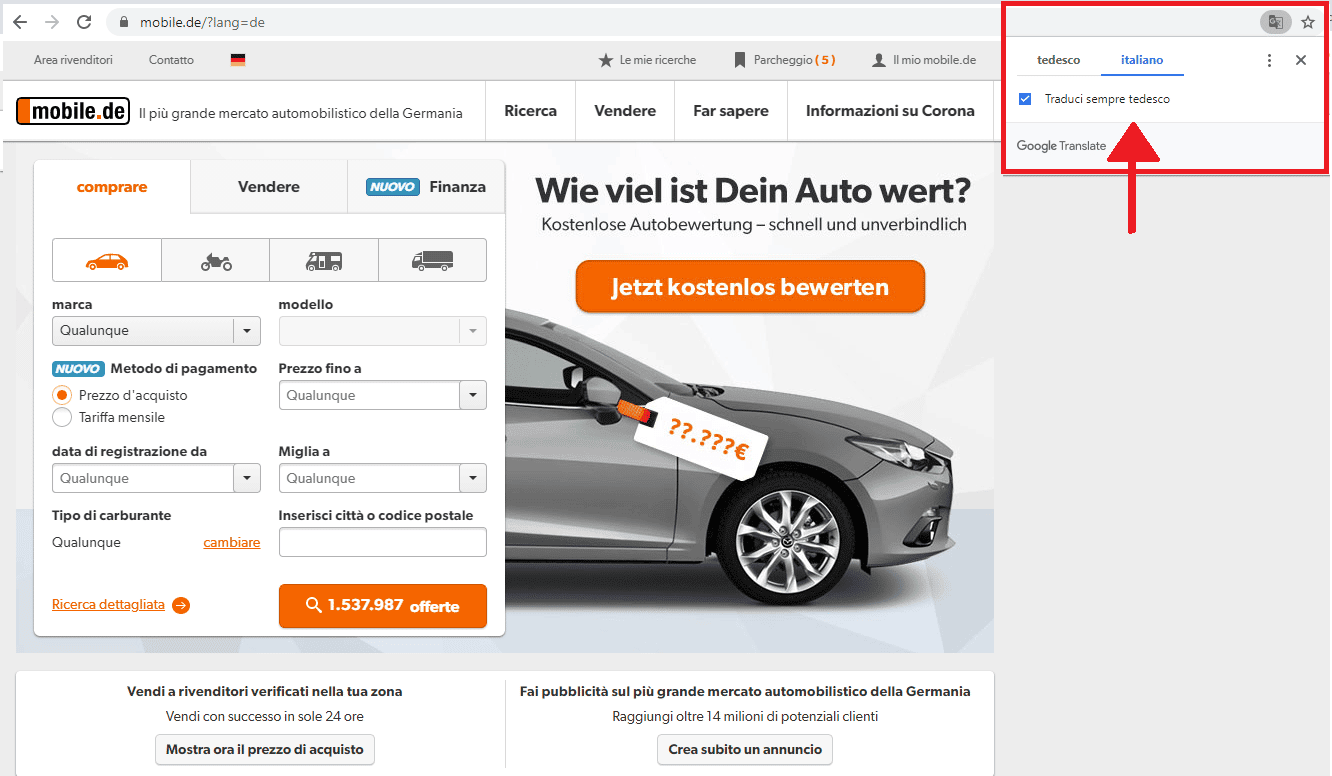
5. Tips for Choosing a Used Camper Van

PRACTICAL TIPS FOR FINDING A VAN
Below you will find listed some advice from my own buying experience that I think may be useful to you when looking for and buying your camper van.
- Start looking as soon as possible: Choosing and buying a van takes time, so as soon as you have a clear idea start looking immediately.
- Keep an ordered file with the characteristics of all the vans you review: this way you can easily compare them in the future and you don’t have to constantly reopen closed files. I, for example, created an Excel template to keep the ads sorted (by year, engine, mileage, location, price, notes, link etc.)
- Save the links to the ads you are interested in an orderly fashion: I recommend that you create an orderly file in Excel or Word. The important thing is that you don’t have to constantly comb through the search engine to find something you have already viewed.
- It’s full of options, don’t just focus on one model: at first I was set on buying a Sprinter, then I changed my mind and settled on the Iveco Daily. Then putting all the data neatly together, I found myself buying a VW Crafter. My advice is to not limit yourself right away and consider all the options available.
- If you’re unsure about what model of van/minivan/car to get, plan to rent one first: putting yourself behind the steering wheel of a similar vehicle might help you to get the “feel” of it, and see if you’re feeling comfortable with its size
- Don’t let the seller rush you: Creating scarcity (e.g. “I have lots of interested buyers”) is a world-old sales technique to push you to buy quickly. Take your time and keep in mind that opportunities come up every week.
- Consider the extra costs to the sale price: taxes (19%-21% of the net price), installation of windows (about 500Euro rear windows or 250Euro side windows), if the seats fit you or you have to change them, if there is already a parking camera etc.
- Don’t be afraid to ask those who know more about it than you do: an opinion from a friend who is a motor enthusiast or a trusted mechanic can clear your mind and make your choice much easier.
- Try the Van: If you know someone who has a van similar to the one you have in mind, ask them if you can try driving it and can view its load cell. This way you’ll know if that model is right for you even before you meet with the seller.
- If you don’t know anything about engines: have a trusted professional take you to view the vehicle or alternatively, ask the seller for a warranty against future breakdowns.
- Remember that you are buying your own little house on wheels: consider all the offers but try not to compromise too much on the quality of the vehicle you will get. Often paying a little more today means paying less tomorrow.
- Don’t Stress Too Much and Enjoy the Search: if you feel you need a pause for reflection do it, don’t force a choice if you are not completely sure. A little stress over such big decisions is normal, especially if it’s your first time. My advice is to put things in perspective and remember that in the end you’re not going to Mars, you’re just buying a van!
These are all general tips that I hope will help you in your search.
Conclusion
In this first article, we looked at the types of vans on the market, the questions to ask yourself to understand your needs, where to look for a used van and some useful tips for doing so in an orderly and efficient manner.
In the next article of this Maxi-Guide onHow to Camper a Van Do-It-Yourself, you will encounter in-depth information and dimensions of all the Most Used Camper Vans.
Thanks for reading, and I’ll see you at the next step! 🙂
BEFORE YOU GO, CAN I ASK YOU FOR SOME FEEDBACK?
Writing detailed articles like this takesa lot of time and effort..
If you liked it, can I ask you to leave me a feedback message in the comments at the bottom of the page?
For a content-creator, knowing that you are being read and that your efforts are useful to someone is the best motivation to keep writing and doing better 🙂
Let me know what you liked or what you think could be added.
If you’d like, you can also share the article to help other people find it!
Thanks for the help 🙂

Read the Van Conversion Guides
How to Calculate the Right Section of 12V Cables | EASY GUIDE
An undersized cable does not carry enough current. A cable that is too undersized can lead to a fire. An oversized cable, on the other hand, simply costs more and is a waste of money. Are you wondering what is the logicfor choosing one section of cable over...
Bluetti vs Ecoflow | Which is the Best Portable Power Station for RV/Vanlife?
The Portable Power Station is an increasingly used accessory on camper vans and RVs, but when does it really make sense to purchase and own or install one? In this article we try to shed some light on how these systems work, the best options on the market, and the...
Van Conversion DIY: How Much Does It Costs? | My Experience
How much does it cost an entirely DIY van to campervan conversion? The queen of all questions... In this article, I want to show you all the costs of my conversion from start to finish, so that you too can get an idea of what it might cost! ...
Van Electrical Diagrams for your DIY Project – Ready to Install
The Electrical System is often one of the most complicated steps in a DIY van conversion. How much energy is needed? What apparatus/devices to purchase? How to connect them? How much would it cost? These are all doubts and questions that normally everyone finds...
Van Interior Conversion: Best DIY Ideas for your Project!
The Interior Outfitting of a DIY converted van is both an aesthetic and structural choice. In this article, you will find useful information and inspiration ideas for customizing the Walls, the Ceiling, and the Floor of your Van! DIY CAMPERVAN SET-UP:...
Kitchen for Camper | Best DIY Ideas for your Van Conversion
Cooking in Camper is one of those things, that makes you feel at home wherever you are! Gas, Diesel or Electric Stove? What equipment and accessories you need on the Road? How much space do you need? How to assemble the kitchen in your Camper? In this article you will...
The Best Fridge for Your Campervan – Which One to Choose?
Buying a trivalent or compressor RV refrigerator? Horizontal or vertical? 12V or 110/220V? In this article you will find all the information you need to choose the best fridge for Your Van, tailored to your Needs! 🙂 THE REFRIGERATOR IN THE VAN:...
Van Conversion: How to Build a DIY Bed for your Camper Van
A Camper is not a Camper if it does not have a bed. Where to Sleep and... Dream! In this Guide you can find the inspiration you need for creating a DIY Bed in Your Campervan, And I'll show you step by step how I built a Complete Bed/Dinette on my VW Crafter....
DIY Camper Bathroom: How to Self-Build a Toilet
If you are Campering a Van you surely must have wondered: How does the Bathroom in a Motorhome work? In this Guide I show you the various types of Bathrooms on the market, I explain how they work, and I show you how you can Build yourself an entirely...
Best 12V Fan for RV | DIY Installation Guide | Van Conversion
A Roof Fan helps keep your Vehicle's humidity under control and change stale air. In this guide you will find everything you need to know about mounting a Maxxfan Deluxe fan on the roof of YOUR van. ROOF FAN: WHAT IS IT FOR? Keeping an RV's...

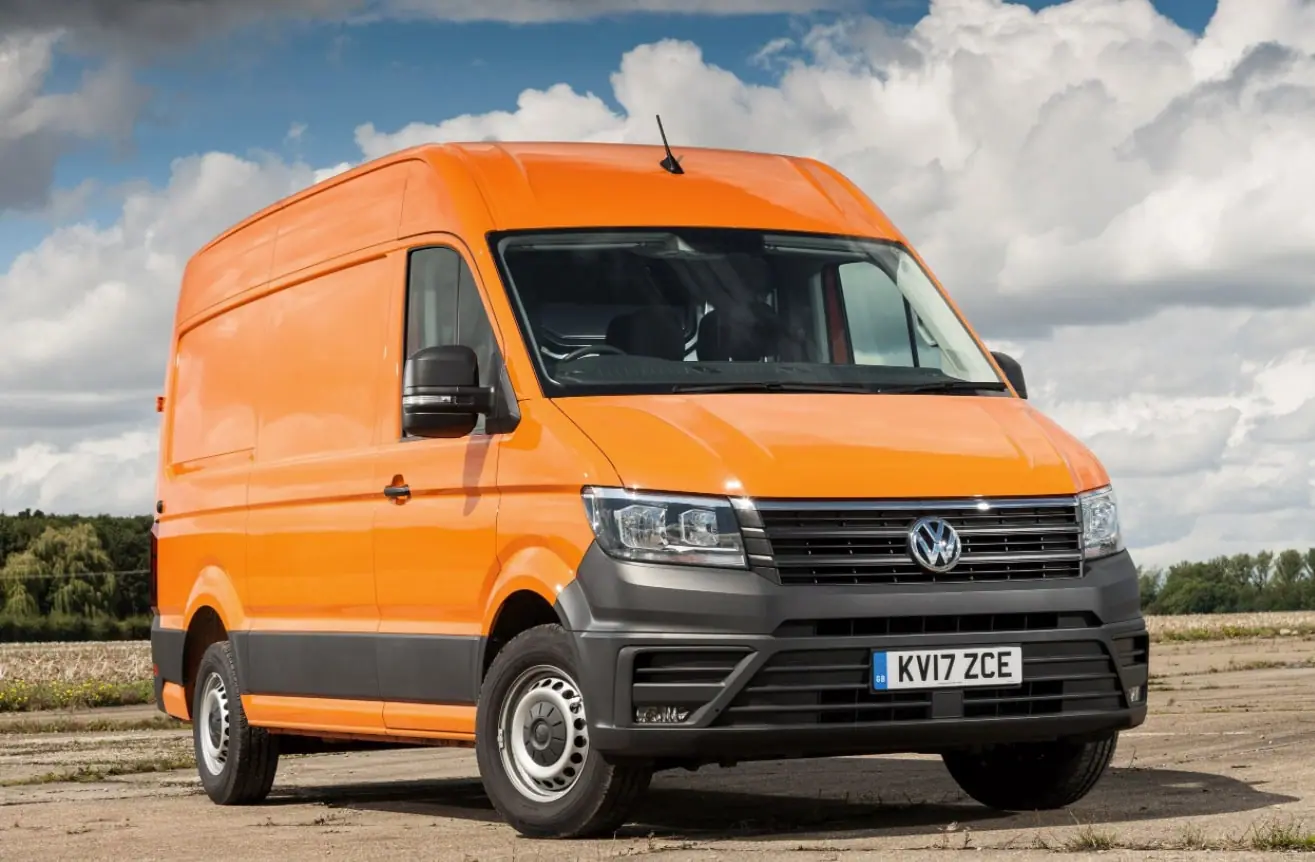
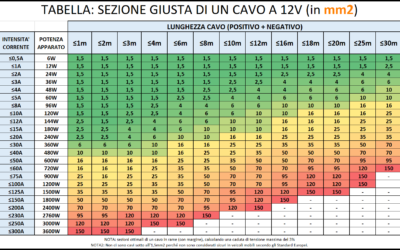
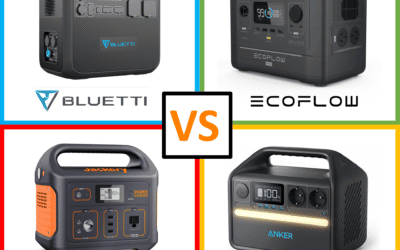

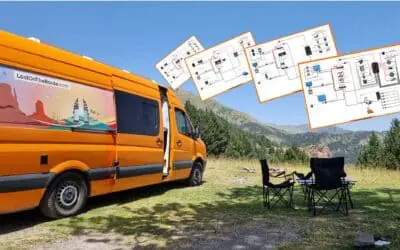



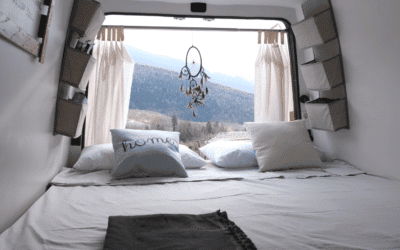

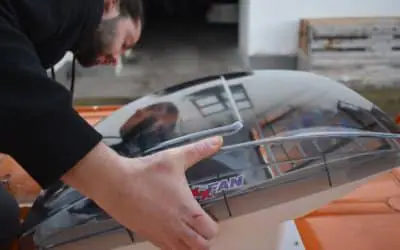




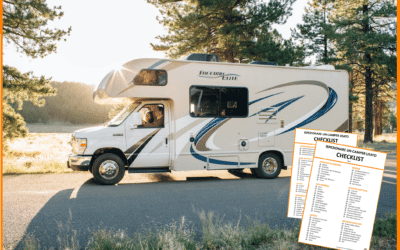



0 Comments